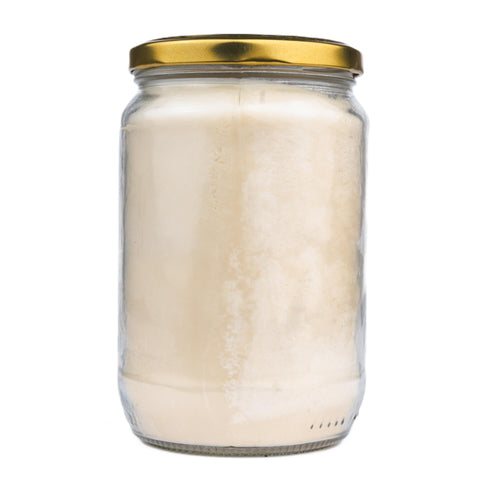Beef tallow composition:
- 99.95% fat
- Carotenoids (provitamin A, beta-carotene).
- Vitamin A, D, E, F.
- Esther.
- Phosphatides.
- Saturated fatty acids: (linoleic, linolenic, oleic, myrostoleic, arachidonic, lauric).
- Phosphorus.
- Sodium.
- Potassium.
- Ashes.
- Cholesterol.
Beef tallow is used for preparing hot dishes: soups and side dishes, as well as for frying and stewing meat and vegetable dishes.
The only downside to this product is that it hardens too quickly. To eliminate this unpleasant moment, experienced cooks combine this fat with other fats in a 1:1 ratio.
Recipes with beef tallow
As for the use of beef tallow in cooking , it is mainly used for roasting and deep-frying beef products. In this case, they turn out to be juicy, with a pleasant golden crust and aroma young veal. You can fry with it or roast pork or other meats, but this will change their flavor to beef.
You can to fry with beef tallow and vegetables or use it for sautéing and seasoning soups. Only in this case, the sharply increasing calorie content of the dish should be taken into account.
In some cases, it becomes simply irreplaceable. This natural animal fat can have the following positive effects on the human body:
Beef tallow has gained high popularity not only in cooking, but also in traditional (non-traditional) medicine. Beauticians often use this product for the production of creams, ointments and nourishing face masks.
The face cream, made from high-quality beef tallow, not only moisturizes, but also nourishes the skin. It can serve as an excellent protective agent for the skin against harmful effects (heat, cold, dust).
In folk medicine, the molten product is sometimes used to remove scars from postoperative sutures. In addition, it is used in warm compresses applied to inflamed joints and the chest in case of a strong cough.
How to tell if the loin is from a calf or a cow
By the color of the loit.
If the loin is white in color, it is obtained from young calves from 12 to 18 months. If the loin is light yellow or yellow it is obtained from older cattle over 24 months.
Possible harms and contraindications of beef tallow:
Beef tallow, sought after in cooking, alternative medicine and cosmetics, is certainly a useful product. However, its use, both in cooking and in traditional medicine, should not be overdone.
Due to the high calorie content of the product, the consumption rate is calculated based on: 1 g per 1 kg of body weight. Other causes to consider in some people are problems with:
- Functional disorders of the liver and kidneys.
- Pancreatitis, chronic pancreatitis.
- Increased acidity of the stomach.
- Diarrhea.
- Stomach ulcer, duodenitis.
- Cholecystitis, calculous cholecystitis.
- Atherosclerosis.
In these cases, it is not recommended to use this natural cooking product.
For everyone else, it's perfect as a substitute for olive oil or oil when cooking in a pan or oven. Beef tallow is much more stable than olive oil - which is carcinogenic at temperatures above 200 degrees. Beef tallow is stable at temperatures up to 240 degrees.










